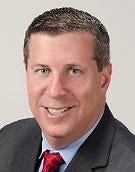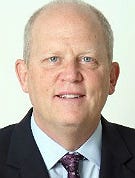Avaya Channel Execs: Chapter 11 Didn't Stop InnovationAvaya Channel Execs: Chapter 11 Didn't Stop Innovation
"We continue to drive adoption through some very turbulent water," say Avaya channel leaders.


Edward Gately
All eyes are on Avaya as it makes its way through the chapter 11 bankruptcy process, and promises partners and customers it will emerge stronger than ever before.
Last month, the company announced the filing of an amended reorganization plan and a new CEO effective Oct. 1. The agreements could cut more than $3 billion from the $6.3 billion in debt it had when it entered bankruptcy in January.
Jim Chirico, Avaya’s chief operating officer and global sales leader, will become CEO when Kevin Kennedy retires in a few weeks.

Avaya’s Gary Levy
Avaya has been transitioning from a legacy hardware business to a software and services company, and has been looking for ways to cut its debt load. This summer, it sold off its networking business to Extreme Networks, while maintaining its call-center operations.
In a Q&A with Channel Partners, Gary Levy, vice president of U.S. channels, and John Colvin, global marketing director, strategic partners, provide an update on Avaya’s focus while navigating through chapter 11, and what partners can expect when it exits bankruptcy.
Channel Partners: How has Avaya’s channel strategy changed with the sale of its networking business to Extreme?
Gary Levy: I would say that, as you know, our (partner) program, Avaya Edge … continues to evolve. And one of the benefits of the program when we started it last year was that it has much segmentation to it. It allowed for the addition of segments and the removal of segments. So, as an example, we’re enhancing our cloud segment this year as we come into our fiscal year 2018, and with the sale to Extreme, we really just were able to remove the segment of networking and not necessarily have to change the program. In fact, we have done our best to honor our partner commitments and make sure that our benefits were going to take through the fourth quarter so our partners would not be hurt by the move to Extreme. So we’re actually making sure there’s funding in the program so our partners would be successful through the transition.
CP: What’s the latest with the Avaya Edge program? Any new features, benefits, etc.?
GL: What we’ve been working toward is the evolution of the cloud in the program. The cloud has been a part of the program since last year and we are enhancing the program as well. We have seen tremendous success in our partners being enabled to stand up their own cloud or work through a combination of selling their cloud and Avaya cloud capabilities. So we’ve seen tremendous multiples of that onboarding and seat growth from the program. The program is driving the behavior and I think that over time we will continue to see that. [It’s] still is evolving for fiscal year 2018, we’re still working out the details, but we are continuing to expand our channel capabilities around …
… cloud offers with the partners as part of the 2018 Edge Program
CP: Is Avaya’s channel strategy changing in terms of types of customers, markets, segments, verticals to pursue?
GL: I would categorize that as there’s been a lot of advancement in the technology, such as mobility, cloud, artificial intelligence and analytics that have really created new opportunities for us and our partner network to attract, engage and grow new customers, while at the same time expanding our reach into our existing customer opportunities. Whether it’s the customer engagement cloud solutions, our team engagement cloud solutions, our developer engagement cloud solutions, and then our analytics engagement solutions, all of these solutions enable our partners to gain additional opportunities with their customers and that is the Avaya Edge.
CP: Much of Avaya’s focus has been on targeting the midmarket. What’s the latest with that strategy?
GL: In Las Vegas (at Avaya Engage) we talked about the midmarket, and the loyal partners that we have in the midmarket, as well as the partners that we bring on on a quarterly basis. We had success bringing on new partners throughout the past six months and we continue to bring on new partners. When you look at our cloud solutions, our IP Office in the cloud … our partners appreciate our solutions because they do not need to add any additional training to their associates because the associates know the products. The partners are able to provide the cloud solution in IP Office to their customers, they don’t have to give up the ownership of the customer, they can retain the customer and the services that they provide to those customers. We are pretty clear in our pricing models, they are clear to our partners, there are no hidden fees and other taxes that sometimes some of our competitors are leaving out or maybe not making clear to their partner community. Because our partner community is so strong in the midmarket, they’ve been able to adopt our IP Office-powered-by-cloud offers, and bring it to market from both a premises and cloud basis, and they still find it a very lucrative offering.
CP: What sort of feedback have you been receiving from partners? What are they saying about what it’s like working with Avaya?
GL: One thing I had committed to back in Las Vegas was that we were going to continue to work to improve the ease of doing business for our partners and move from the complexity that may have existed in the past in some of our offers. I have certainly seen that. And Jim Chirico as COO has really done a fantastic job of improving our cross-functional work streams and being able to remove the complexity from the business, which enables our partners to go to market faster and stronger with the Avaya programs.
CP: Is Avaya’s CEO change going to have an impact on partners?
GL: Not to take anything away from Kevin — Kevin has done a fantastic job. But Jim in his prior role was working on many of those things removing some of the operational complexities and improving many of the operational processes with our partner community. And I think that will continue to grow as …
… he takes the CEO helm.

Avaya’s John Colvin
John Colvin: The one thing that we have the benefit of is that Jim has been with Avaya for a long time. He’s coming up on or just celebrated his 10th anniversary, and given that, he had a different lens that he was looking through. Jim worked very closely with a lot of our partners, so he has a great relationship and had a great relationship with them from his past as a COO, and then with the past year now – a little over a year now – with his role as the sales leader. So Jim has a very strong view of the partners who contribute a significant portion of our overall revenue to the company.
So he’s got a very good relationship with them and they have a very good relationship with Jim, so I think there’s a lot of trust built up. As the CEO, you have a different dynamic, if you will. The good news is that Jim is carrying that dynamic with him.
CP: What is the future of enterprise phone systems, and where will Avaya fit into that?
JC: The thing that we focus on is the customer. It’s always been about the customer experience, where the customer is going and what’s important to the customer. I think the dynamic has changed in the fact that the world has gone to a digital footprint, everything is being done in a digital, transformational process, and it’s the experience that the customer takes along that journey. Many of our customers come to work with a better set of tools than they’re given at their work, so they bring this new dynamic with them. So we, Avaya, have had to adjust and drive our solutions to drive a digital transformation within that customer base so that we can provide the customer experience that they’re looking for because the employees of these companies come into this as a consumer as much as they are a buyer of our technology, their personal consumption of their handheld devices, their computers, their iPads, their technology, and they expect that same technology at the desktop. So that’s what we’ve been focused on, driving that transformation and customer experience.
CP: Any comment about looking ahead, heading into the fall and winter?
GL: You will continue to see the advancements around our customer engagement, our team engagement, our developer engagement and our analytics engagement. These are major differentiators in the market; they are opportunities for both our existing customer base and customers of other manufacturers to take advantage of as we are the leader in this space. And I really think some of our top partners have continued to step up and ramp their teams up to sell these solutions. So our partner community is certainly ready for the advancements in technology.
JC: And I think one of the things that will surprise folks given the course of the last eight to nine months is we’ve not stopped innovating. Avaya has been very focused on continuing to spend on R&D. We had a very definitive plan and we’re sticking to that plan, and we continue to innovate. And because of that, we’re going to come out and we’re going to be much stronger from a technology perspective. You’re going to see us working more closely with technology drivers, cybersecurity, Blockchain, AI — all of those things are things that we’ve been thinking and working toward as we continue to drive adoption through some very turbulent water.
Read more about:
AgentsAbout the Author
You May Also Like


